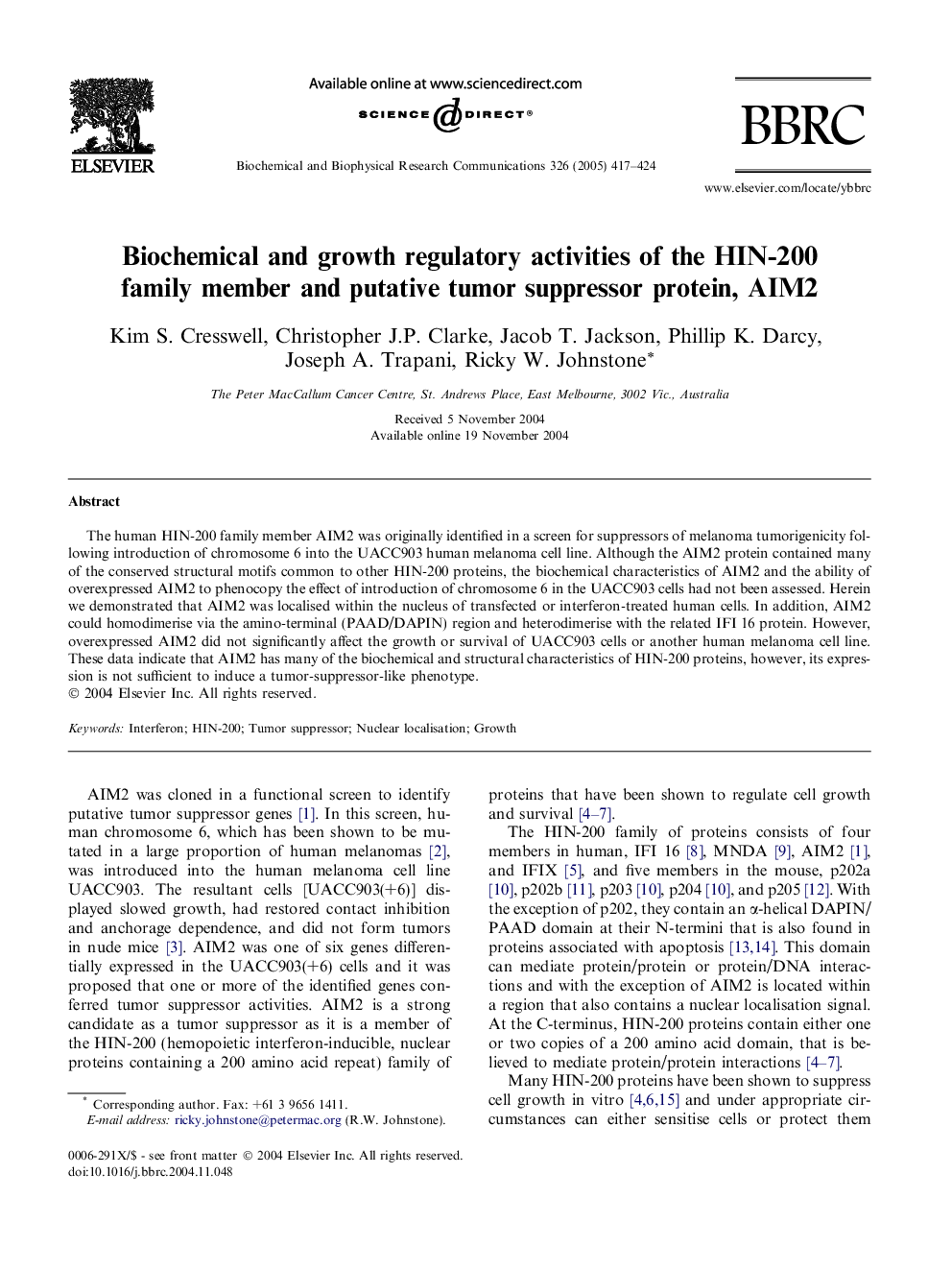| Article ID | Journal | Published Year | Pages | File Type |
|---|---|---|---|---|
| 10772087 | Biochemical and Biophysical Research Communications | 2005 | 8 Pages |
Abstract
The human HIN-200 family member AIM2 was originally identified in a screen for suppressors of melanoma tumorigenicity following introduction of chromosome 6 into the UACC903 human melanoma cell line. Although the AIM2 protein contained many of the conserved structural motifs common to other HIN-200 proteins, the biochemical characteristics of AIM2 and the ability of overexpressed AIM2 to phenocopy the effect of introduction of chromosome 6 in the UACC903 cells had not been assessed. Herein we demonstrated that AIM2 was localised within the nucleus of transfected or interferon-treated human cells. In addition, AIM2 could homodimerise via the amino-terminal (PAAD/DAPIN) region and heterodimerise with the related IFI 16 protein. However, overexpressed AIM2 did not significantly affect the growth or survival of UACC903 cells or another human melanoma cell line. These data indicate that AIM2 has many of the biochemical and structural characteristics of HIN-200 proteins, however, its expression is not sufficient to induce a tumor-suppressor-like phenotype.
Related Topics
Life Sciences
Biochemistry, Genetics and Molecular Biology
Biochemistry
Authors
Kim S. Cresswell, Christopher J.P. Clarke, Jacob T. Jackson, Phillip K. Darcy, Joseph A. Trapani, Ricky W. Johnstone,
